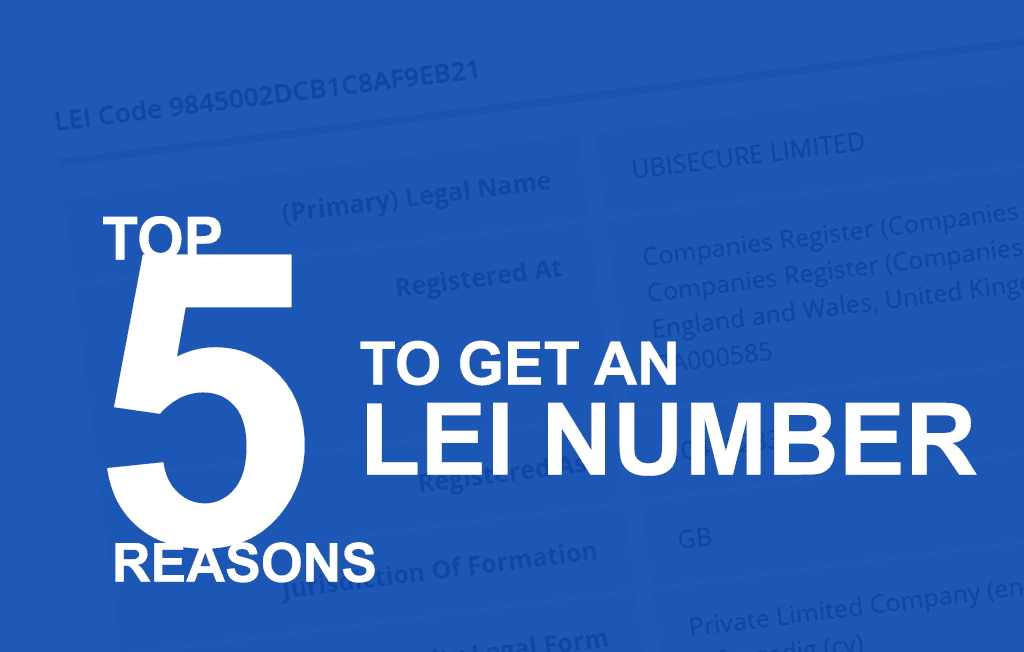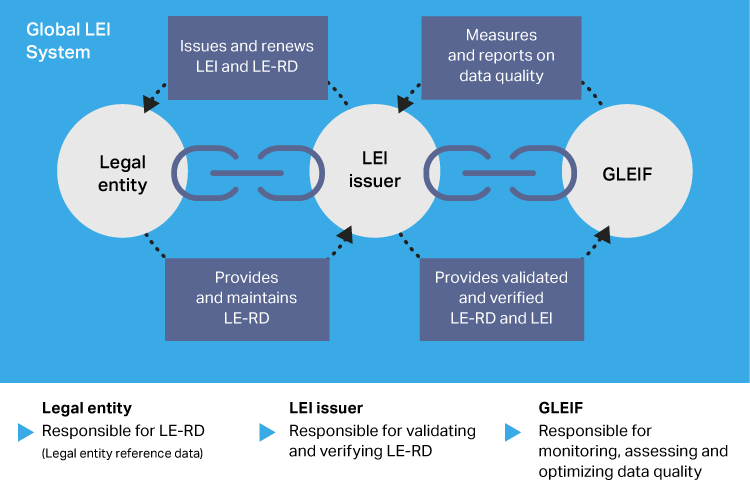
Why get an LEI?
With almost 1.6 million organisations now with Legal Entity Identifiers (LEI), the LEI is firmly established as the standardised code to identify who is who, and who owns whom. We’ve broken down some of the key reasons why get an LEI, and why your organisation should register an LEI sooner rather than later:
REASON ONE:
The LEI code is your global identifier. It allows you to be recognized globally.
- The LEI is a standardised organisation identifier that’s endorsed by both the G20 and the Financial Stability Board, and regulated by the Global LEI Foundation (GLEIF).
- The LEI code is a live reference to your organisation’s identity record (see Ubisecure’s LEI record).
- The LEI is as important as other organisation identity attributes such as your local Business Registry company number, VAT number, domains, etc.
- The LEI is an essential identifier for enabling cross border transactions.
- The LEI enhances your organisation credibility both locally and globally.
- The LEI is already widely supported with a significant install base. Over 1.5m LEIs have been issued so far and the install base is growing fast.
REASON TWO:
Many regulations mandate use of LEI. Non-compliance prevents transactions and risk fines.
- There are many regulations that mandate orgs purchasing LEIs (see latest Regulations).
- New regulations demanding use of LEIs are going live every month; be prepared and obtain LEI in advance.
REASON THREE:
The LEI code is widely used for Know Your Customer (KYC) processes. Make sure your organisation is recognised as a credible LEI holder.
- Make sure your org is not being penalised through not having LEI
- Extensive vendor networks (see GLEIF vendor stakeholder network) already rely on LEI for KYC, B2B onboarding and to refresh client identity data.
- The use of LEIs is well researched as a tool for cost saving in KYC/onboarding in the banking sector (See the GLEIF ebook).
- LEI is the primary connector between all the regional, or private sector identifiers and by connecting multiple sources and formats of identity, it is possible to conclude a more trustworthy identity assertion.
- The LEI is formed using a standardised, consistent identity data reference schema that includes Entity Legal Forms (ELF) codes (Ltd, GmbH, etc). The unambiguous ELF data provides an improved user experience by categorizing legal entities providing clear insight into the global marketplace.
REASON FOUR:
LEI records contain a powerful set of identity data attributes. They help improve trust in who you are both in the physical world and now the online world.
- Both humans and machines can verify the LEI. The GLEIF database of issued LEIs is open and searchable via its web interface, full dataset download, or API
- The LEI must be renewed annually to remain active, and renewal requires revalidation of corporate details.
- The LEI can be readily updated at no cost to holding organisation and can always represent accurate organisation identity; when corporate details change there is no need to issue a new code.
- The LEI is the only identifier to connect parent and children organisations publicly. Known as Level 2 data, LEIs provide transparency into the “who owns whom” aspect of organisation identity.
- LEIs can list multiple “Doing Business As” names and previously incorporated names, giving a historical audit trail to counterparties.
- LEIs support multiple languages for names and addresses. Local language support provides a better localised understanding of, and reliance upon, identity data.
- The data quality of the LEI system is open and transparent. LEI reference data can be challenged. A defined, publicly accessible process exists within the ecosystem to openly challenge identity data if a counterparty believes it to be inaccurate.
REASON FIVE:
Your LEI code will be used by numerous other applications. You can enhance security and brand protection by obtaining an LEI.
- It is becoming commonplace to report your LEI on websites; contained in web pages, press releases, site seals, QR codes, bar codes, and more.
- LEIs are already supported by XBRL (the open international standard for digital business reporting). Both human-readable and machine-readable LEIs can be embedded in critical XBRL documents such as annual reports and financial statements, as the standardized organisation identifier.
- LEIs will soon be included in the new ISO payment standards as the organisation identifier in SWIFT transactions.
- The implementation of LEIs into Digital Certificates will soon be standardised through the draft ISO 17442-2and ETSI TS 119 412-1; delivering digital signing and workflow solutions that embed the LEI into the digital signatures.
Hopefully that’s enough reasons as to why get an LEI! If you haven’t already, head over to RapidLEI to get an LEI today. With our automated issuance, you’ll have a registered LEI code in just a few minutes.






About The Author: Steve Waite
Steve is the Chief Marketing Officer for Ubisecure and RapidLEI.
More posts by Steve Waite